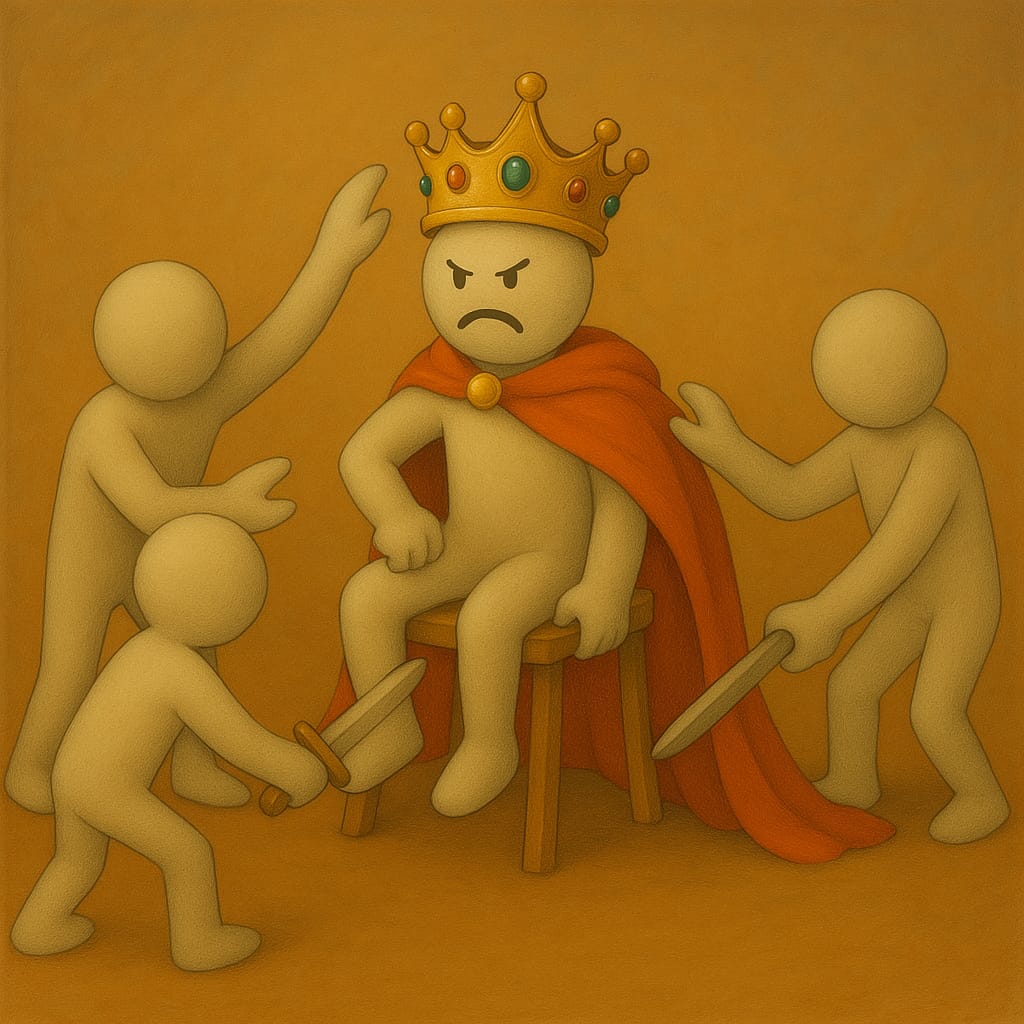
It’s not just the squirrels: In defense of camping
Popular psychology books notwithstanding, academic psychologists are not fond of categorizing people into groups or ‘types’. After all, most psychological characteristics are best described in more continuous terms, with people scoring higher or lower on some trait, or tending more towards one or the other end of a spectrum. However, informal observation suggests one important exception to this rule, and that’s people’s attitudes to camping holidays. People seem to either love them or loathe them, with very few moderates in between.
The discomforts of camping
As far as I’ve been able to establish, one of the main reasons why some people hate camping is the discomfort: sleeping in a sack on a flimsy mattress underneath a thin layer of polyester or canvas, cooking with only the barest minimum of utensils, sharing bathrooms with any number of strangers whose standards of hygiene may differ wildly from your own – really, it’s like a prolonged festival without the music or foodtrucks.
While I admit that all of this is true, I count myself among the camping fans. In defense of our perverse preference, we will usually claim that the discomforts are more than compensated for– we will wax lyrical about the health benefits of being outdoors, the peace and quiet, communing with nature, the plants, the animals, and so on. Again, all of this is true. What’s cooler than having your morning coffee while watching a squirrel jump from tree to tree? But there’s a more straightforward defense: in a way, the discomforts are what makes camping fun.
Don’t get me wrong: I don’t mean this in a masochistic or Calvinistic way. Generally, I don’t like discomfort at all, nor do I believe that suffering is ‘good for the soul’. But as a psychologist with an interest in creativity, I can’t help noticing the parallels between camping and some of our classic creativity research paradigms. Although we tend to think about creativity as coming up with new stuff, in reality it often comes down to using existing stuff in a new way.
Although we tend to think about creativity as coming up with new stuff, in reality it often comes down to using existing stuff in a new way.
Some of the most important creativity tasks used in research revolve around this – for example, in the Unusual Uses Test people are asked to come up with novel ways of using an ordinary object (such as a brick or a cardboard box), and so-called insight problems typically require people to relax their assumptions about what certain objects can be used for. Thus, a small box of tacks can be turned into a platform for a candle[1], or a hammer can be used as a weight to create a pendulum[2]. In all of these cases, you need to imagine what else you can do with these objects, other than the usual.
Functional fixedness and affordances
Creativity researchers usually describe this as ‘overcoming functional fixedness’: although we’re used to thinking about objects only in terms of their ordinary functions (a box is for storing things, a hammer is for hitting nails), this habit of thought means that we fail to see possibilities.[3] A hammer is not just for hitting nails, it’s also a heavy and solid object, usually composed of metal and wood. A box is not just a container, it’s also solid and usually rectangular with flat surfaces, often made of cardboard. These properties are not exclusively tied to any particular use. Heavy and solid objects, or flat and rectangular ones, can be used in all sorts of ways, regardless of what they were designed for. This is where the opportunity for creativity arises.
Objects can be used in all sorts of ways, regardless of what they were designed for. This is where the opportunity for creativity arises.
Another, related approach to creative uses of objects is to think about their affordances: what does an object allow you to do, which action possibilities does it provide you with? Yes, a hammer is for hitting, a box is for storing, a brick is for building, but these are only the typical affordances. Other usages are always possible; the trick is to see these possibilities. A chair is something to sit on – unless you’re looking for something to help you reach the ceiling, in order to remove a spider from your bedroom.[4] In other words, the situation you’re in can help you discover atypical affordances of everyday objects.
The ultimate creativity intervention?
What does all this have to do with the trials and tribulations of camping, you may ask. My point is that a camping holiday often is a long exercise in overcoming functional fixedness, or in discovering novel affordances. Precisely because you have to make do with fewer objects and conveniences than you’re used to, a camping holiday forces you to unleash your creative potential. If you’ve ever used a beermat or a stone to even out a wobbly chair or table, you’ll know that there is something hugely satisfying about such solutions; perhaps because they satisfy our need for competence, or because people just enjoy being creative.[5] To me, this is part of what makes camping fun. Coffee mugs can be used to collect cut vegetables or be turned upside down as mini-tables; bath towels can create shade; clothespins can be used as markers to prevent the humiliation of tripping over your own tent’s guy lines, and so on.
I’m not claiming that such ‘camping solutions’ are particularly brilliant or surprising; most of them are trivial or maybe even pathetic. But I will venture the hypothesis that being immersed in a situation that constantly challenges you to do ordinary things with unusual objects, or to do unusual things with ordinary objects, will make you feel more competent and creative than having everything ready-made for you in a hotel room or apartment. A camping holiday might turn out to be the ultimate creativity intervention (with squirrels as an added bonus)! Should anyone be interested in testing this hypothesis, I am perfectly willing to sacrifice myself for science, and spend some more time in a tent.
Image credit: photograph by Tom Taker. Licensed under CC BY 2.0.
References
[1] Duncker, K. (1945). On problem solving. Psychological Monographs, 68(5), whole no. 270.
[2] Maier, N. R. F. (1931). Reasoning in humans: II. The solution of a problem and its appearance in consciousness. Journal of Comparative Psychology, 12, 181-194.
[3] Sternberg, R. J. & Davidson, J. E. (Eds.) (1995). The nature of insight. Cambridge, MA: MIT Press.
[4] Withagen, R., & van der Kamp, J. (2018). An ecological approach to creativity in making. New Ideas in Psychology, 49, 1–6.
[5] Wronska, M. K., Bujacz, A., Gocłowska, M. A., Rietzschel, E. F., & Nijstad, B. A. (2019). Person-task fit: Emotional consequences of performing divergent versus convergent thinking tasks depend on need for cognitive closure. Personality and Individual Differences, 142, 172-178.



